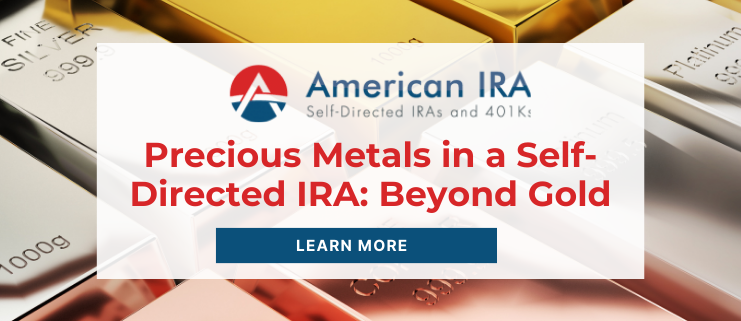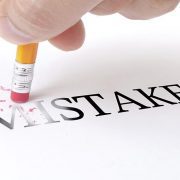Precious Metals in a Self-Directed IRA: Beyond Gold
You might have heard it on cable news commercials before. You can hold gold in a Self-Directed IRA! And indeed you can: a Self-Directed IRA is a powerful way to hold a wider range of diverse retirement asset classes, including precious metals. But notice that the phrase ‘precious metals’ is plural. There’s more than one type of precious metal. And if you want diversification that feels truly “diverse,” you might research venturing beyond gold. Let’s address what it means to hold gold in a Self-Directed IRA—as well as other metals you might have overlooked.
Why Hold Precious Metals in a Self-Directed IRA?
In a word? Security. There’s something you can’t replace about precious metals: they’re tangible. You hold them in a safe. They’re not numbers on a computer and they’re not going to be “hacked” by cybercriminals. People hold precious metals because they know that precious metals aren’t going anywhere anytime soon. And it provides diversification beyond the stock market. In unusual economic climates—where it can be difficult to forecast where to make money—precious metals can sometimes feel like the lone hedge.
There are plenty of reasons why someone might invest in a Precious Metals IRA. Precious metals like gold, silver, platinum, and palladium provide a hedge against inflation and currency devaluation. Historically, they’ve maintained their value over long periods, which makes retirement investors feel better.
Silver: The Other Standard
True, gold usually takes the spotlight. But silver is another formidable contender for your Self-Directed IRA. Like with gold, however, there are requirements to the silver you can hold in a Self-Directed IRA. Silver coins and bars eligible for inclusion must have a fineness of 0.999 or higher. The 1 oz. U.S. Silver Eagle, for example, is a popular choice. And silver has a lower price point compared to gold, allowing for more extensive accumulation, if that’s what you’re after.
Silver also has more practical uses. Those uses include electronics, solar energy, and medicine. This, in turn, can bolster silver demand and value.
Platinum and Palladium: The Hidden “Gems”
Let’s go beyond gold and silver. What about platinum and palladium? These two metals present even more opportunities for diversification within a Self-Directed IRA. There are standards here, as well. Both metals must be in bar or coin form, hallmarked by a NYMEX- or COMEX-approved refiner/assayer, with a fineness of 0.9995 or higher.
Platinum is not only rare, but it has significant industrial applications. For example, it’s used in the automotive industry for catalytic converters. Palladium, often overshadowed by its more famous counterparts, can also be in high demand, especially in automotive manufacturing for emission control systems. Its scarcity is one advantage. And its increasing industrial use makes it it a compelling choice for investors seeking to diversify their precious metals holdings.
The Role of a Self-Directed IRA in Precious Metals
Holding these precious metals within a Self-Directed IRA gives you more options for long-term value gain. You can use the tax advantages of IRAs while enjoying some of the benefits of physical asset ownership. Self-Directed IRAs provide greater flexibility and control over investment choices, after all. Why not use those choices?
Choosing the right precious metals for your Self-Directed IRA depends on your investment goals, of course. What’s your risk tolerance? Whether you opt for the more “mainstream” allure of gold, the industrial demand of silver, or the unique opportunities of platinum and palladium, diversifying your precious metals holdings can potentially be the boost your portfolio needs.
Interested in learning more about Self-Directed IRAs? Contact American IRA, LLC at 866-7500-IRA (472) for a free consultation. Download our free guides or visit us online at www.AmericanIRA.com.









